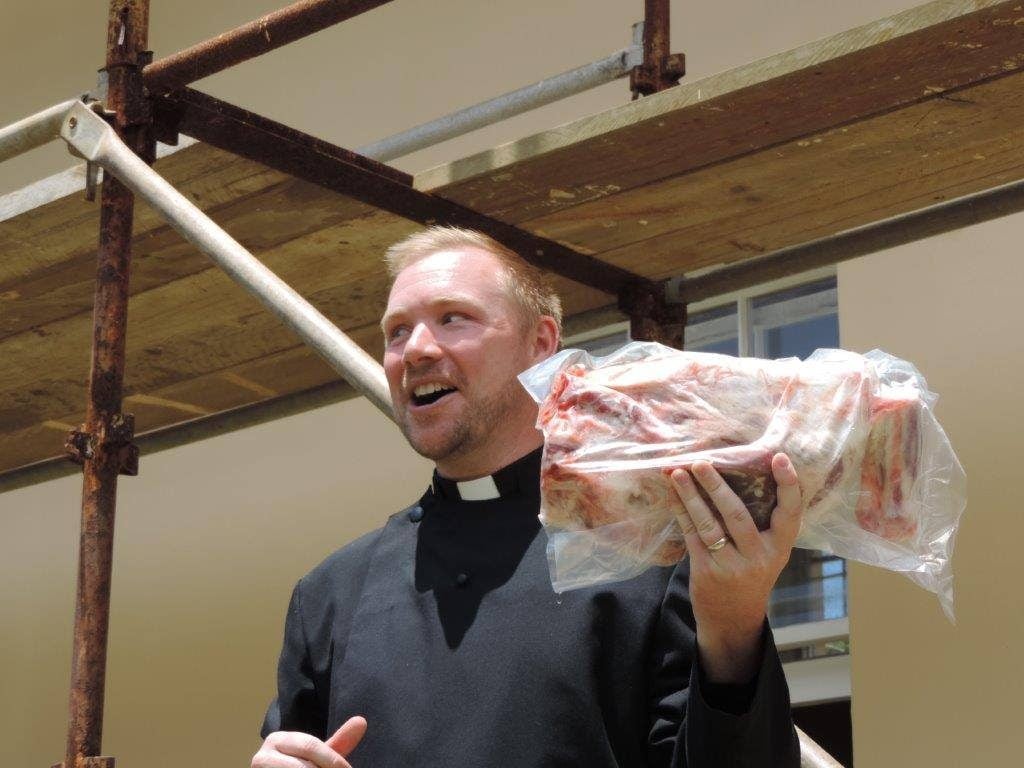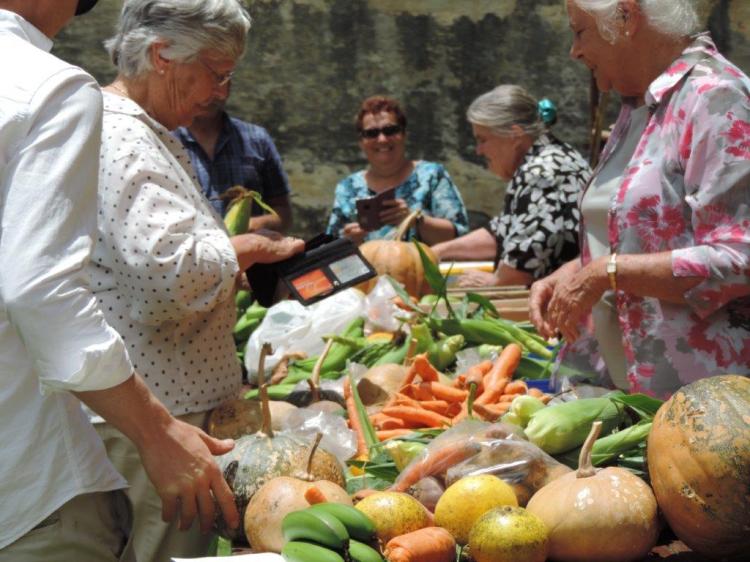Thanksgiving is a big deal on Norfolk Island, the hilly island 1400km east of Brisbane defined by pine trees, jagged cliffs, and a colourful history as a penal colony and refuge for Bounty mutineers.
Up to a quarter of Norfolk Islanders attend church on Thanksgiving, either the Church of England, Methodist or Seventh Day Adventist church. This large influx is thanks to three factors – the island’s Christian history, its American connections, and its reliance on a bountiful harvest.

“Our church attendance on Thanksgiving would be bigger than Christmas and Easter,” says David Fell, who has been full-time minister of Norfolk Island Church of England since 2015.
“We’ll be packed to the gunwales; we’ll have something like four or five hundred people in All Saints for Thanksgiving, so it’s chock-a-block … It’s the one day that our nominals come to church, even more than Christmas and Easter.”
“Our church attendance on Thanksgiving would be bigger than Christmas and Easter.” –David Fell
The community of Norfolk Island has been coming together to celebrate Thanksgiving ever since American trader Isaac Robinson first decorated All Saints Church for Thanksgiving in the mid-1890s. As an agent of shipping line Burns Philp, the Registrar of Lands and the island’s first and only US Consul, Robinson had friends among the many American whalers on the island and it must have seemed the obvious thing to do.
“We’re an island of stories and Thanksgiving is part of the story.” – David Fell.
The former Bounty mutineers, who had come to Norfolk in the 1850s after they outgrew Pitcairn Island, had always celebrated the English Harvest Festival in line with the traditions they remembered from church life in England.

But the year after Robinson used palm leaves and lemons to decorate the church for the first Thanksgiving, parishioners brought down all kinds of produce to adorn the church, and a tradition developed of tying corn stalks to the pew ends and piling flowers on the holy table and around the font.
“At first, the families took home the fruit and vegetables after the service, but these days they auction it off and raise money for the church for maintenance and for staff,” says Fell.
“There’s a variety of banana dishes and they’ll always feature on Thanksgiving day.”– David Fell
While All Saints has the biggest service, the Methodist church and the Seventh Day Adventist church on the island also have their own Thanksgiving services.
Another reason Norfolk Islanders celebrate Thanksgiving is their connection to the land and its harvest.
“The thing about living on Norfolk Island is none of our fresh food is imported – it’s all grown here because of our strict quarantine laws – we are very much dependent on the produce of the island, so we’re one of the few places left where Thanksgiving kind of makes sense,” notes Fell.

“There’s no reticulated water, we’re all on rainwater tanks, and so, in that sense, it really is a harvest festival where we thank God for the provision of rain – it’s a place that feels very dependent on God and provision.”
Unlike in America, however, there will be no turkeys on Norfolk Island’s Thanksgiving dinner tables.
“It’s a place that feels very dependent on God and provision.”– David Fell
“People collect whale bird eggs – they’re a bit of a delicacy. It’s much like a Christmas lunch so there’ll be a big ham on the table, and our church Thanksgiving lunch will be a bit of a pot luck. There are island dishes, they do a lot of banana dishes – things with overripe bananas, under-ripe bananas, ripe bananas – there’s a variety of banana dishes and they’ll always feature on Thanksgiving day.”
The huge four-storey All Saints Church is one of two historic locations where Fell conducts services. The main morning service and Sunday school are held at St Barnabas Chapel, the old headquarters of the Melanesian mission. But All Saints is bigger, so as well as offering a 1662 Prayer Book evening service mainly for tourists, it also hosts the big celebrations such as Christmas and Thanksgiving.
“We’re an island of stories and Thanksgiving is part of the story, I guess,” says Fell.
“Ellen White … was gripped by this story of this Edenic-like Christian community.” – David Fell
Another reason Thanksgiving continues as a cultural remnant on Norfolk Island is its Christian history through the Pitcairners.
Fell says Norfolk Islanders still remember the Pitcairn hymns of that era and the Pitcairn Anthem, which are sung at funerals and public occasions.
“John Adams, who was the last surviving mutineer, should have been hung but he was pardoned because they found he was leading a small Christian community when all those decades later they found him [on Pitcairn Island], so that became part of the story, part of the reason that they were given a spot on Norfolk Island,” says Fell.
“And that’s why, coincidentally, the Seventh Day Adventists were so represented on Norfolk Island and Pitcairn because Ellen White in upstate New York at the time when her denomination was forming was gripped by this story of this Edenic-like Christian community on Pitcairn Island that was following the teachings of the Bible far away from the evils of society – they really were famous at that time.”





















